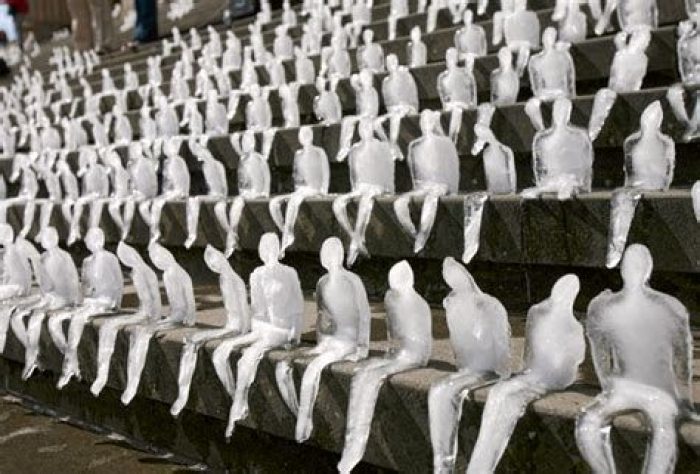‘Minimum Moment’ by Néle Azevdo contradicts what a public sculpture is, through using ice in her installation. With ice, she creates small, temporary sculptures which contradict the large-scale, permanent aspect of a public sculpture or monument. Azevedo compares ice to music, theatre, or dance. as a form of art. You spend so much time preparing for it and until it is quickly over.

Question or provocation:
Temporary public sculptures are generally where a sculpture is temporarily placed in a space. However, when using ice as a sculpture, the temporality of the sculpture is out of our control. Water is the most real, true, pure substance in our world. However, does the temporality of an ice sculpture question how true it is as a sculpture? We question if the solidity of a sculpture determines the truthness. When it starts melting and the state of matter changes, does it slowly lose itself as a sculptural object? Explore these questions by creating ice sculptures that question what a sculpture can be.
Materials and processes
Place objects in the water before you freeze it, so they will also act as an assemblage. It is interesting to see how states of matter can confine and release objects in the water. Also experiment with using various shapes of containers to make ice. Using food colouring to tint my water will create interesting colour relationships as well. You will need to prepare the ice hours beforehand, while also thinking about the sunlight outside and how light will refract on the ice.
Presentation
Like Nèle Azevado, you are able to intervene in a site through the ice sculptures. Especially since you can only let the ice melt outdoors, you can utilise the space that the sculptures are in as a part of the work. You will be presenting my work in photographic sequences which show the melting of the ice. You will also be presenting a video of a timelapse, showing, the movement of the ice as time passes.
